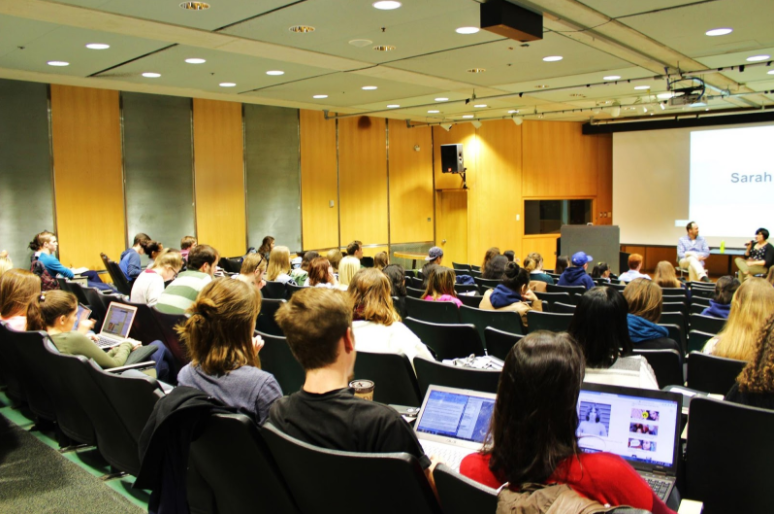By Magda Konieczna
Missing from the Shattered Mirror report’s recommendations for Canadian journalism were insights about journalism education. A panel discussion at last week’s Canadian Communication Association conference in Toronto aimed to fill that gap. It also reflected the challenges inherent in teaching journalism against the backdrop of an evolving and struggling industry, something that has been widely discussed in American journalism education in the last few years.
The report, released early this year, laid out in grim detail the issues facing Canadian journalism and offered recommendations to strengthen journalism’s sustainability and civic function.
A panel of Carleton professors at the conference noted that universities can play an important role in strengthening journalism. They described deepening partnerships with professional news organizations that give students at Carleton real-world experience, but may hinder their development as journalists if those news organizations turn out to be behind the times.
Carleton students have been publishing a community newspaper, called Centretown News, for decades. That has grown recently into a partnership with news startups iPolitics and ArtsFile. Through a journalism class, students attend news meetings in the iPolitics newsroom and are assigned stories or pitch their own across all three publications. Their professor, Randy Boswell, described how he does a first edit and then sends stories on to the iPolitics workflow, giving students the experience of being edited by professionals.
In the U.S. this has been called the teaching hospital model of journalism education. Many American journalism schools have been operating this way since 2012, when the idea was proposed by a group of funders in an open letter to university presidents. Others have taken up the call more recently.
Beyond offering real-world experience, this model may also serve as a lifeline for floundering news organizations by staffing them with students who produce stories for credit rather than money, providing a much-needed cushion at least as news organizations figure out a way forward.
The teaching hospital notion is grounded in the idea that students can learn the current skills in the industry by working in newsrooms. However, traditional news organizations — the very entities that have been struggling to find a way forward for journalism in the online world — may not be able to give them that experience, pointed out Carleton professor Aneurin Bosley. He described a student who produced graphics to accompany a story, only to learn that the newspaper where she was an intern didn’t have the capacity to publish them on its website.
This discrepancy in embracing digital skills across newsrooms makes it hard to prepare students for the industry, Bosley said. It also points to challenges with the teaching hospital model that have been noted by American scholars for some time. Katherine Reed teaches at the University of Missouri and works with the Columbia Missourian, a community newspaper that has served the city of Columbia for more than 100 years and is often held up as an example of a successful partnership between student and professional journalists. Still, she notes in an article that the teaching hospital analogy doesn’t translate perfectly for journalism since teaching hospitals focus on conventional medicine, while journalism education needs to reflect the experimentation that’s necessary to the survival of the field.
I would argue that journalism schools, with budding reporters who are insulated from the marketplace, are in fact the ideal incubators for journalistic innovation. Indeed, in a study of four American cities, coauthors and I found that a connection to schools increased the likelihood that a civic news website would make it through its early years. There are plenty of examples of American schools doing this kind of work. The discussions at CCA suggest the trend is coming to Canada, too. Of course, students — and Canadian democracy — would be best served through a sustainable and innovative news industry, something the report lays out a plan to achieve.
Magda Konieczna was a reporter at the Guelph Mercury before becoming an assistant professor of journalism at Temple University. Her book, Journalism Without Profit: Making News When the Market Fails, is coming out with Oxford University Press.
Magda Konieczna is associate professor of journalism at Concordia University in Montreal. Her work focuses on the connections between journalism and democracy through examinations of new business models for news, the growth of collaborative news production, and a community-centered approach to journalism. She is the author of Journalism Without Profit: Making News When the Market Fails (Oxford University Press, 2018) and was a city hall reporter at the now-closed Guelph Mercury.


